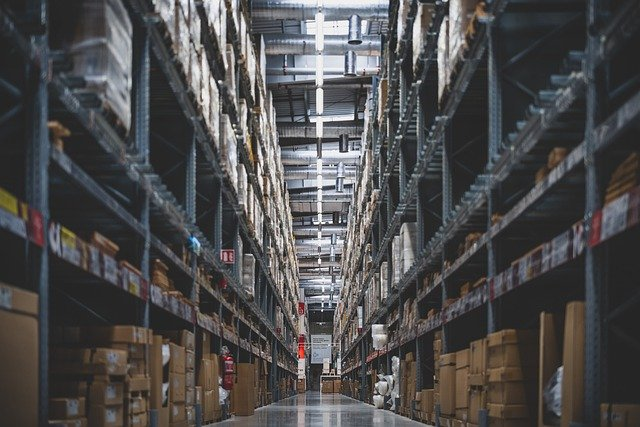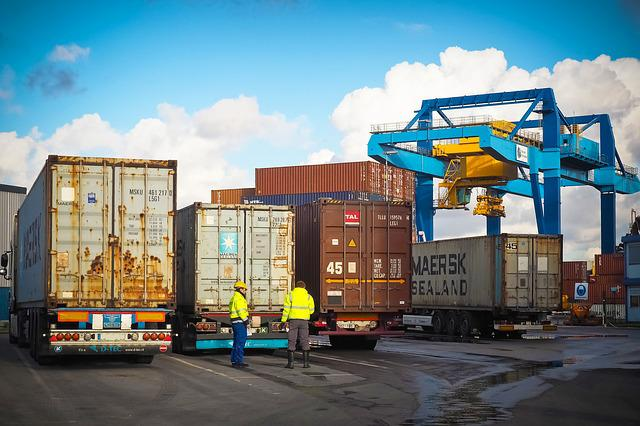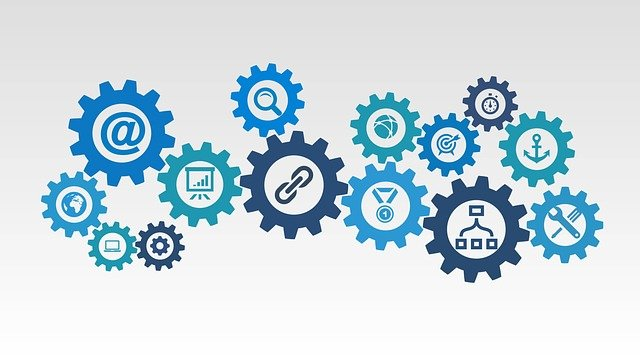The trucking industry is a critical component of the U.S. economy, responsible for transporting billions of dollars in goods each year. Despite this importance, the industry has been hit hard in recent years by a combination of factors including high fuel prices and regulatory changes.
In order to remain competitive and thrive in this challenging environment, carriers must embrace new technologies and practices that will enable them to operate more efficiently and profitably. One such technology is the transportation management system (TMS), which is a software application that helps carriers manage their freight shipments.
What is a TMS Freight System?
TMS freight is a software application that helps carriers manage their freight shipments. Transportation management systems can provide a number of benefits to carriers, including reducing shipping costs, improving customer service, and increasing operational efficiency. In order to realize these benefits, however, carriers must choose the right transportation management system for their needs and use it effectively.
How does a Transportation Management System for Freight work?

A TMS freight system works by providing carriers with a centralized platform from which they can manage all aspects of their shipping operations. This includes booking shipments, tracking shipments, and invoicing customers. Transportation management systems can also provide visibility into the supply chain, allowing carriers to optimize their routes and schedules.
What Industries Benefit from Transportation Management System?

TMS freight systems can benefit any industry that ships goods, but they are particularly well-suited for the trucking industry. This is because transportation management systems can track freight efficiently, which helps carriers reduce shipping costs, improve customer service, and increase operational efficiency.
Some of the other industries that can benefit from TMS freight systems include:
- Retail: Using transportation management systems, retailers can ship orders more quickly and efficiently, resulting in improved customer satisfaction. From the retail perspective, a TMS can also help to reduce shipping costs.
- Manufacturing: A TMS can help manufacturers ship products more quickly and efficiently, which can lead to improved customer satisfaction. In addition, a TMS can help manufacturers reduce shipping costs.
- Distribution: When used in conjunction with a warehouse management system (WMS), a TMS can help distributors improve their inventory management and order fulfillment processes. This can lead to improved transportation operations.
- 3PL: A TMS can help third-party logistics providers (3PLs) improve their shipping operations to better meet the needs of their clients. They can also help provide better visibility into the overall supply chain to help logistics management.
Benefits of TMS Software

As anyone in the logistics industry knows, there are a lot of moving parts to keep track of. A good transportation management system (TMS) can make all the difference in keeping your business organized and efficient.
But what exactly are the benefits of using a TMS? Here’s a rundown:
Fleet tracking
A TMS will give you real-time visibility of your transportation services as a whole, including your fleet; location, performance, transit time, and maintenance records. This information is vital for route optimization, freight planning and simply keeping your business running smoothly.
Improve communication
Transportation management systems can help improve communication between dispatchers and drivers throughout your entire transportation network. Drivers can get updates on route changes or delays, and dispatchers can see where drivers are and how they’re doing.
Improved carrier communication can in turn supply business insights that help to improve carrier performance thus improving on-time shipments and order management.
Cost savings
When you have transportation management software, you can take advantage of features like real-time pricing to get the best deals on shipping. You can also avoid costly mistakes like overbooking or booking with the wrong carrier.
Not all shipments can save time and money but by avoiding manual processes and using machine learning, the opportunity improves.
Increase efficiency
It’s easy to see how TMS software can make your business more efficient. With all of your information in one centralized location, TMS technology allows primary users access to detailed information and actionable reporting to improve upon the entire shipping process.
Stay compliant
TMS software can help you stay compliant with regulations like Hours of Service (HOS). By keeping track of your drivers’ hours and rest times, you can avoid costly violations. And with emerging technologies, additional benefits with new compliance regulations are always covered.
Reduce emissions
During route planning, the transportation management system takes into account things like traffic and weather to find the most efficient route. This can save fuel and reduce emissions from your fleet.
Higher customer satisfaction
Whether you’re shipping orders or delivering goods, a TMS can help you get them to your customers on time. Order management is critical for customer success and using a transportation management system provides additional value in terms of extending the capability to offer expedited shipping.
Choosing the Best Carrier for Your Needs

Once you’ve decided to use a TMS, the next step is finding the right carrier for your needs. There are a few things to consider:
- Services offered: Does the carrier offer the services you need, like refrigerated shipping or cross-border shipping? It’s important to make sure they can meet your requirements.
- Pricing: Compare rates between carriers to find the best deal. Don’t forget to factor in things like fuel surcharges and accessorial fees.
- Network coverage: Does the carrier have a good network, with coverage in the areas you ship to? You’ll want to make sure they can get your shipments where they need to go.
- Technology: Is the carrier using the latest technology, like GPS tracking and real-time updates? This can make a big difference in the level of service you receive.
- Customer service: When you have an issue, you want to be able to reach someone who can help. Make sure the carrier you choose has good customer service.
Tips for Optimizing Your TMS Freight System

Once you’ve chosen a carrier and set up your TMS, there are a few things you can do to optimize it for maximum efficiency:
Automate where possible
Transportation solutions will have features like automated booking and tracking that can save you time. For instance, if you know what days and times your shipments are typically delivered, you can set up your system to automatically book them for those days and times. This way, you don’t have to manually input the data each time.
Use real-time data
When it comes to your TMS, data is your best friend. A good system will provide you with real-time data on everything within the shipping process, from ship times and locations to ETAs and tracking numbers.
This information can be invaluable in helping you plan and optimize your shipping process and manage transportation services across your entire operation.
Stay organized
A well-organized TMS freight system can make a world of difference. Make sure to keep track of all your shipments, bookings, and tracking information in one central location. This will help you stay on top of things and avoid any potential shipping disasters.
Communicate with your carrier
A good relationship with your carrier is essential for a smooth-running TMS freight system. Be sure to communicate your needs and expectations to them, and don’t be afraid to ask for help if you’re having trouble with anything.
Keep an eye on your system
Like any piece of complex machinery, a TMS freight system needs to be monitored and maintained. Be sure to keep an eye on your system and make sure it’s running smoothly. If you notice any problems, don’t hesitate to reach out to your carrier for help.
Be flexible
Things change, and when they do, your TMS freight system needs to be able to adapt. Be flexible in your planning and be prepared to adjust on the fly if necessary. This will help you avoid any potential shipping disruptions.
Take advantage of features
A good TMS provider will have a variety of features that can save you time and money. Be sure to take advantage of all the features your system has to offer, and don’t be afraid to ask your carrier for help in getting the most out of them.
Plan for the future
A good TMS freight system is an investment in your business. Be sure to plan for the future and choose a system that can grow with your business. This will help you avoid any potential shipping headaches down the road.
Following these tips, you can be sure that your TMS freight system is running as efficiently as possible. By taking the time to optimize your system, you’ll save yourself time and money in the long run.
Best Practices for Maintaining a TMS Freight System

If you’re using a freight management system (TMS), it’s important to keep it running smoothly in order to avoid disruptions and delays in your supply chain. Here are the best practices for maintaining your TMS.
1. Keep your system updated with the latest software releases. This will ensure that you have the latest features and security patches. Since cloud-based TMS software is constantly evolving, it’s important to keep up with the latest changes.
2. Perform regular system backups. This will help you recover from any unforeseen problems that may occur. Your backups should be stored in a safe and secure location.
3. Test your system regularly. Testing helps you to identify any potential problems that could occur. Testing should be done on a regular basis, especially after any changes or updates have been made to the system.
4. Monitor your system closely. The TMS should be monitored on a regular basis to ensure that it is functioning properly. Any problems that are identified should be addressed immediately.
5. Keep your documentation up to date. When changes are made to the system, be sure to update your documentation accordingly. This will help you and others understand the system better and avoid any confusion.
6. Seek help from experts when needed. If you’re having problems with your TMS, don’t hesitate to seek out help from those who are more experienced. There are many resources available that can help you troubleshoot and resolve any issues you may be having.
Final Thoughts
Understanding the entire process and how a TMS freight system can help ensure that your entire operation is running smoothly and efficiently. The system plays a central role in your organization’s ability to track shipments and retain critical shipment information.
By taking the time to care for your system, you can avoid disruptions in your supply chain and keep your business running smoothly. TMS vendors can provide vital insights and support in maintaining and effectively using a system to grow your business.

